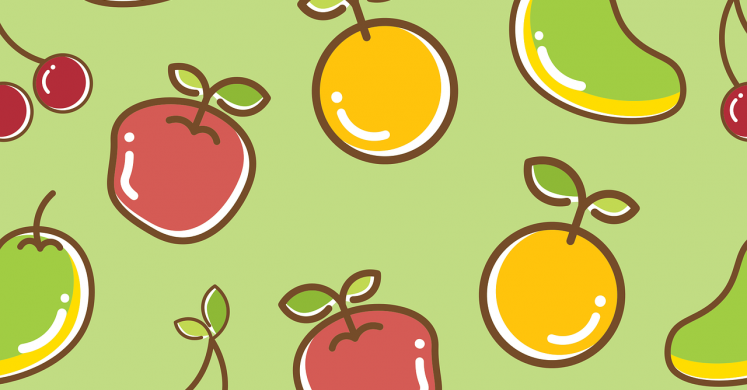Blog

Women’s Health and Nutrition with UPMC Health Plan
At every stage of women's* lives, nutrition and exercise are the cornerstones of good health and optimal energy. But certain vitamins and minerals become especially important at particular times of life. Learn about the special nutrient needs women have during each stage of life with the LMP Team and UPMC Health Coaches.
*This presentation focuses on nutrient needs for people who menstruate and go through menopause. Although this class is titled Nutrition and Women’s Health, we recognize that not all women menstruate and go through menopause.
Class Materials: Women’s Health and Nutrition PPT, Tofu Scramble Recipe, Nutrition Resources
FAQs:
I’m concerned about iron deficiency. Do you have any tips on getting enough iron throughout the day?
Iron is an amazing nutrient that helps build hemoglobin, a part of red blood cells that delivers oxygen throughout the body. Needless to say, it is very important! People who menstruate or who are pregnant have higher demands for iron due to an increase in blood supply and blood loss. The best way to ensure that you are eating enough iron throughout the day is to avoid skipping meals and by eating balanced dishes that hit all of the food groups. Sources rich in iron include: oysters, chicken, lean beef, beans/lentils, tofu, peanut butter, fortified cereals and breads, and dark leafy greens. Although some plant foods are good sources of iron, it is often attached to compounds that reduce its absorption. These compounds are called phytates and are found in whole grains and dried beans. If you follow a vegetarian or vegan diet, it’s important to consume vitamin C rich foods (citrus, bell peppers, tomatoes, etc.) with iron sources and consume them in greater quantities. Drinking coffee and tea separately from meals can also help improve your iron absorption. Click here for more plant-based iron sources and tips.
Personal tip: I love to add chia seeds to my morning smoothie, oatmeal, and PBB toast to boost the iron content of my meals!
What is the difference between folate and folic acid?
Folic acid and folate are the two forms of vitamin B9. Folic acid is the synthetic form of folate that is used in supplements and in fortified foods such as rice, pasta, bread, and some breakfast cereals. Folate is the naturally occurring form found in citrus fruits, leafy greens, beans and peas. This nutrient is essential to DNA production, protein metabolism, heart health, and cell growth. Folate is especially important for those who are interested in becoming pregnant due to its impact on neural tube defects.
You can get too much folic acid, but only from man-made products such as multivitamins and fortified foods. You can't get too much from foods that naturally contain folate. The upper tolerable limit is no more than 1,000 micrograms of folic acid a day for adults and 300-600 for children. Children are at more risk of toxicity, and too much folic acid can hide signs that you lack vitamin B12. This is why it is recommended to only supplement when you know you need it, are pregnant or if your doctor prescribes it.
I get so ravenous before my period. Do you have any tips on navigating these cravings?
Find yourself reaching for the sweets or chip bag before starting your period? You aren’t alone! Food cravings, especially for carb-rich foods, are a common complaint from people who experience PMS.This may be because carbohydrates provide tryptophan, which is the precursor to serotonin. A craving for sweets is likely a manifestation of the body's attempt to increase serotonin levels, which ultimately helps to improve your mood. While carbohydrates can improve your mood, an excess intake of refined carbs can cause a spike and drop in insulin levels, which ultimately will leave you even more exhausted and hungry. To maintain energy and fullness levels, I recommend building snacks that satisfy your sweet craving needs, but also include a complex carb, protein, and/or fat source. Examples include a dark chocolate, cranberry and cashew trail mix, chocolate covered banana with peanut butter, sweet and salty popcorn, and berries with yogurt.
Sources:
- Evatt ML, Mersereau PW, Bobo JK, Kimmons J, Williams J. Why Vitamin B12 Deficiency Should Be on Your Radar Screen: A Continuing Education Update. http://www.cdc.gov/ncbddd/b12/documents/B12-030910.pdf. Published February 11, 2010.
- Food and Nutrition Board of the Institute of Medicine. Dietary reference intakes (DRIs): recommended dietary allowances and adequate intakes, elements. https://www.nal.usda.gov/fnic/DRI/DRI_Tables/recommended_intakes_individuals.pdf.
- Linus Pauling Institute. Calcium dietary supplement fact sheet. National Institutes of Health Office of Dietary Supplements website. https://ods.od.nih.gov/factsheets/Calcium-HealthProfessional/.
- Hollins-Martin CJ, Van den Akker O, Martin CR, Preedy VR (eds). Handbook of Diet and Nutrition in the Menstrual Cycle, Periconception and Fertility. Wageningen Academic Publishers; 2014.
- Micronutrient Information Center. Oregon State University website. http://lpi.oregonstate.edu/mic
- World Health Organization. Joint WHO/FAO expert consultation on diet, nutrition and the prevention of chronic diseases: recommendations for preventing osteoporosis. WHO Technical Report Series, No. 916 (TRS 916). http://www.who.int/dietphysicalactivity/publications/trs916/en/gsfao_osteo.pdf.

